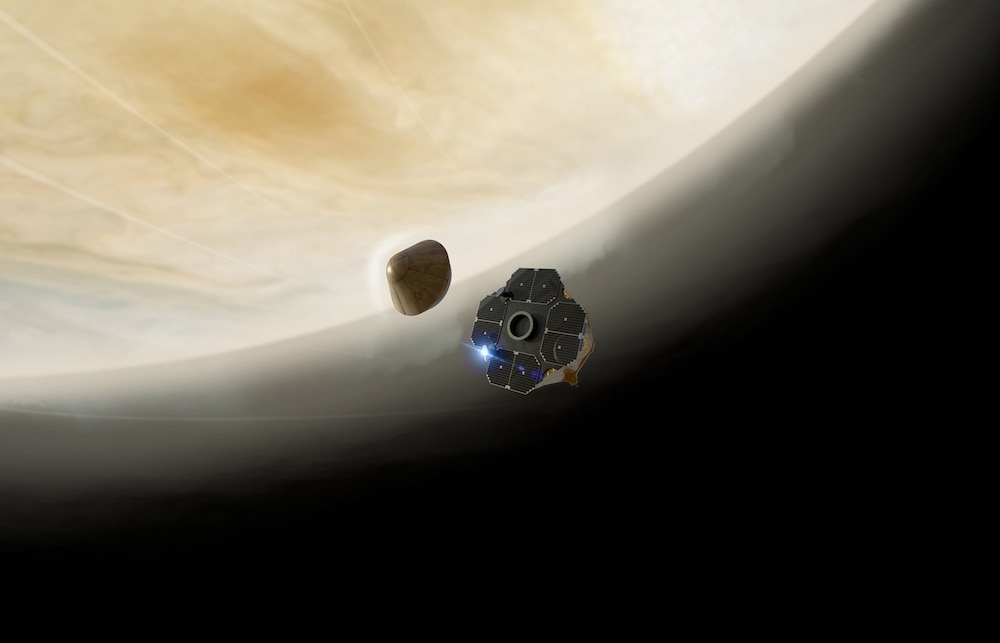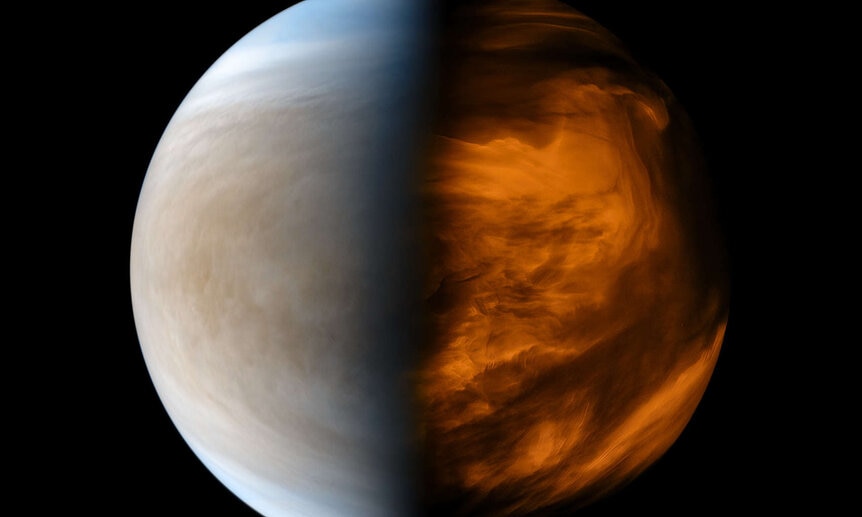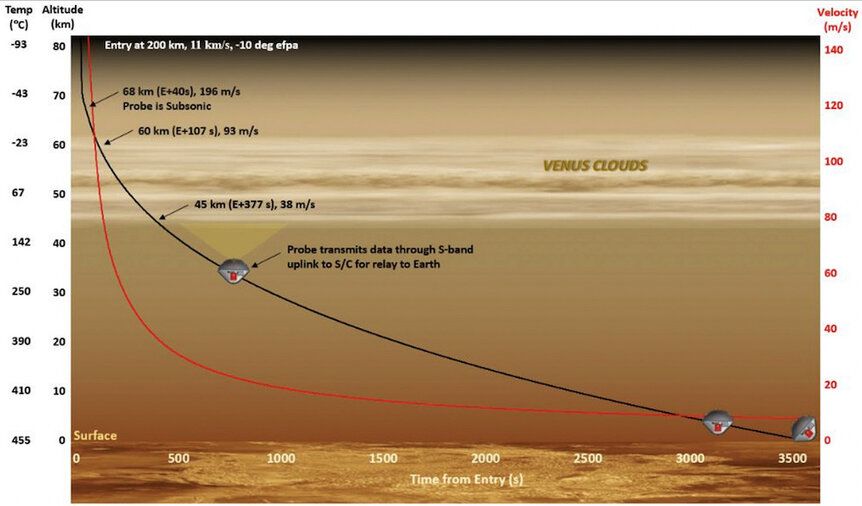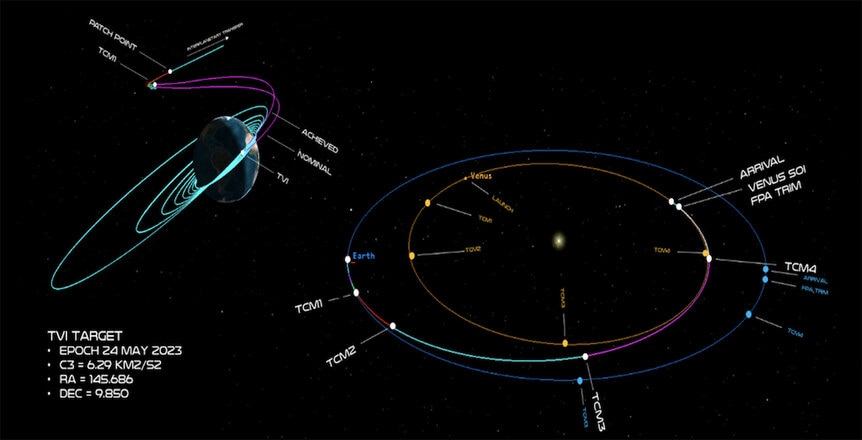Create a free profile to get unlimited access to exclusive videos, sweepstakes, and more!
The depths of Hell: Rocket Lab is sending a mission to Venus
Tasting the clouds of Venus to look for life.

Next year, the private space company Rocket Lab is going to drop a probe into the atmosphere of Venus to look for life.
Yes, seriously. And they’re funding it all themselves, too.
The as-yet-unnamed mission is planned for a May 2023 launch to rendezvous with Venus in October, five months later. A backup launch window is January 2025, when Earth and Venus swing back into the right orbital positions.
Rocket Lab builds a small orbital rocket called Electron, capable of getting 300 kilograms of payload to orbit. That’s not much, but the revolution in mini-satellites, including Cubesats, actually makes that a respectable amount. With the addition of a third stage they call a Kick Stage, the Electron can send missions with smaller mass into lunar or even interplanetary space on a small spacecraft called Photon, which is about a meter on a side, or roughly the size of a washing machine.
Their CAPSTONE mission launched in June 2022 and is currently headed for the Moon. A mission to Mars is planned in 2024. Electron has had dozens of successful flights and deployed over a hundred small satellites, so there is a good history here.
The CEO of Rocket Lab, Peter Beck, announced in 2020 he wanted to send a probe to Venus to look for signs of life in the atmosphere. There weren’t any details about the mission when he said that, but that’s changed: A team of engineers and scientists, including planetary scientists Sara Seager and David Grinspoon, just published a paper outlining the mission and its science [link to paper].
The science goal of the mission is to investigate the habitability conditions in the atmosphere of Venus high above the surface, where temperatures and pressures are more like Earth than the brutal hellscape below. Another goal is proving the Photon spacecraft’s capabilities, and just to show that high-level science can be done quickly and relatively inexpensively compared to generalized multi-purpose planetary missions.
The science payload is very simple, a single detector called an autofluorescing nephelometer — nephelo for cloud, so “cloud measurer,” which is lovely — which sends light through a sample of a gas to determine the number, size, and possibly the molecular composition of particles suspended in it. It will sit inside a 40-centimeter wide 20-kg atmospheric capsule that will be deployed from the spacecraft on Oct. 23, 2023. Three days later it will descend into Venus’s dense atmosphere, ramming through it to slow down.
It will sample the atmosphere as it drops from 60 to about 45 km above the surface, taking about 5 minutes to do so. The data will then be transmitted up to the spacecraft for relaying to Earth. About 30 minutes later it will drop low enough that the pressure vessel containing the nephelometer will rupture, and something like a half hour after that it will impact the surface. Given the atmospheric pressure of 90 times Earth’s — like being under a kilometer of water — and a temperature of roughly 450°C, you can guess how that goes for what’s left of the probe.
The goal is to look for organic, carbon-based molecules in the temperate atmospheric layer, as well as the composition of the air there in general. Some of this is driven by the recent claim of the remote detection of the chemical phosphine in Venus’s atmosphere, although there’s been a lot of back-and-forth on whether the detection is real. Just last month the lead scientist on the original research, Jane Greaves, said that the signal consistent with phosphine has been seen again using other telescopes. Phosphine is made, among other ways, by anaerobic bacteria on Earth, and it’s not clear how non-biological chemistry could make it on Venus.
The idea of life on Venus has been around for a long time. This mission may help us understand the possibility better.
The Electron rocket is not like much more powerful rockets like the Falcon 9. Instead of just flinging a spacecraft toward its destination, it takes a more patient approach. After achieving a circular low-Earth obit, it undergoes a series of small rocket burns to make its orbit more elliptical, raising the apogee, or highest point of its orbit, higher and higher. This type of sequence, called an Oberth maneuver, takes much less energy and fuel, though is a much slower approach than a direct flight.
After several burns, when the apogee is 70,000 km, there will be a final burn to put the Photon spacecraft on an interplanetary trajectory toward Venus that includes a small assist from passing the Moon. Five months later it will pass Venus, and will still be within range when the atmospheric probe beams its data back to it.
If successful, two more missions, collectively called Venus Life Finder, could be sent to our evil twin planet: A balloon that would be able to float in the atmosphere for a long period of time to collect far more data, and an even more ambitious atmospheric sample return mission, so that scientists back on Earth can study the air of Venus in the lab. Amazing.
I’ll readily admit I’m impressed by all this. The engineering and science are designed to get maximum bang for the buck — a mission like this will cost some tens of millions of dollars, which Rocket Labs is self-funding. That itself is impressive, as the mission will serve as a business card for future endeavors.
But also the audacity of this idea is galvanizing. Nothing like this has ever really been done, not quite like this, and the best part is that it’s entirely doable. There’s no pie-in-the-sky here, just straightforward steps that mostly have been done in the past separately but not all in a row like this. No magic, just engineering, science, and experience. And the payoff could be finding out if we are alone… or at least helping us along in that direction.





























